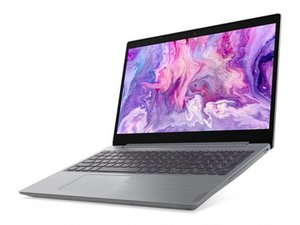crwdns2862678:0crwdne2862678:0
crwdns2895503:0crwdne2895503:0
If your Lenovo IdeaPad 3 15IML05 laptop starts making excessive fan noise, especially during resource-intensive tasks follow this troubleshooting guide for potential causes and solutions to help address these issues effectively.
High Resource Usage from Unnecessary Programs
High CPU usage from running multiple applications can cause your laptop to overheat
- Solutions:
- Open Task Manager (Ctrl + Shift + Esc)
- End unnecessary apps with high CPU or memory usage
- Disable unnecessary Startup apps in the Task Manager's Startup tab
Intensive Tasks
Resource-heavy tasks can cause overheating
- Solutions:
- External Cooling: If you often use your laptop for gaming, video editing, or other intensive tasks, a laptop cooling pad can help lower temperatures.
- Cooling pads typically include built-in fans that enhance airflow beneath your laptop, preventing overheating during extended use.
- External Cooling: If you often use your laptop for gaming, video editing, or other intensive tasks, a laptop cooling pad can help lower temperatures.
Blocked Airflow
Using your laptop on soft surfaces like a bed or blanket can block air vents and trap heat, reducing your laptop's ability to cool itself and causing it to overheat.
- Solutions:
- Always use your laptop on a flat, hard surface like a desk or table.
- Ensure vents (usually on the sides or bottom) are not obstructed.
Dust Accumulation in Air Vents
Over time, dust can accumulate inside the laptop, clogging the vents and cooling system. This can significantly impact cooling performance.
- Solution:
- Power off and unplug your laptop.
- Use a can of compressed air to blow out dust from the air vents (typically located on the sides or bottom).
- Ensure airflow is restored to allow the internal fan to function efficiently.
Inefficient Power Settings
Using high-performance power plans increases heat generation.
- Solutions:
- Go to Settings > System > Power & Sleep and change the power plan to Balanced or Power Saver instead of High Performance.
- Adjust Processor Power Management by searching for "Edit power plan" and selecting Change advanced power settings. Then, under Processor power management, reduce the maximum processor state to 80-90% to decrease heat generation.
Outdated BIOS or Drivers
Outdated system firmware or drivers can mismanage thermal controls, causing overheating.
- Solution:
- Update BIOS: Go to Lenovo’s official website or Lenovo Vantage software and check for BIOS updates for your model. Follow the instructions to ensure that the BIOS is updated successfully.
- Update Drivers: Ensure your device drivers, especially graphics and power management drivers, are up to date. You can do this through Device Manager or via Lenovo Vantage software.
CPU and GPU Temperatures Too High
- Track Your Laptop's Temperature: Use software tools like HWMonitor, Core Temp, or Speccy to monitor the temperature of your laptop’s CPU and GPU.
- CPU Temperatures: Ideally, the CPU should stay below 85°C (185°F) under load. If it frequently exceeds this, it may indicate a cooling issue.
- If the temperatures are too high, it may be time to consider thermal paste replacement.
Malware or Unwanted Software
Malware and unwanted software can cause high CPU usage, contributing to overheating.
- Solution:
- Scan for Malware: Run a full scan with Windows Defender or any trusted third-party antivirus software to ensure your laptop is malware-free.
Fan Has Failed
Thermal paste may degrade over time, and the fan may have broken.
- Solution:
- Fan Issues: If the internal cooling fan is malfunctioning, follow this guide to replace it.
- Thermal Paste Replacement: When replacing the fan assembly, it's important to replace the thermal paste as well.


crwdns2944067:00crwdne2944067:0